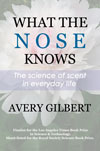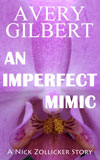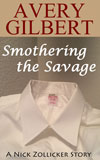View Larger Map
A mysterious mega-stink showed up in the greater St. Louis area on Sunday morning. St. Louis Post-Dispatch reporter Carolyn Tuft attempted to track down the source of the foul odor. She checked the with usual suspects, but both the gas company and a local sewage treatment plant said “it’s not us.”
Ms. Tuft followed up one rather unusual explanation: that the smell is from chemically treated road salt that’s been spread around recently. That drew a denial from the Missouri Department of Transportation.
The online version of her story attracted nearly one hundred comments. Several people thought the smell resembled that of oil refineries in nearby Illinois. Other suggested a more exotic source: sulphurous fumes seeping out of the ground as a result of recent seismic activity (the New Madrid fault, site of a devastating 19th century quake, runs close by.)
I emailed Ms. Tuft who continues to follow the story; she is looking into the seismic theory.
The online comments run from the usual jokes and posturings to local people simply adding their olfactory observations. These latter are potentially valuable data points. For example, Lulu C. says “I still smell it today everywhere from Sunset Hills to St. Ann.”
Being unfamiliar with the local geography, I decided to take all eighteen smelly locations specifically mentioned in the comments and map them. The result is the Google map atop this post; it can also be found here.
To me, the odor locations form a remarkable pattern: they closely track the western bank of the Mississippi River. Could the river be the odor source?
UPDATE 8:42 PM
On reflection, there may be a better explanation. Look at a large version of the Google map; imagine a line running through the map pins. It runs from SW to NE—pointing directly at Roxana, Illinois, which commenters “nickylouse” and “wmh95970” said is the home of oil refineries. I don’t know the area but the Google satellite view shows what look like oil storage facilities in Roxana. The wind during the smell episode was from the northest. Could the Roxana refineries be the source of the stink?
UPDATE January 28, 2009 With a Whimper Not a Bang . . .
Here, in its entirety, is the followup to the Big Stink in St. Louis, from today’s Post-Dispatch:
Foul Odor Fades Away, at LastWell, there you have it. Despite a string of odor “sightings” aimed directly at the refineries of Roxana, IL, Fire Capt. Keuss declares it “one of those mysteries.”
A St. Louis fire captain said that the foul odor that permeated the St. Louis area Sunday and Monday has gone away, but no one knows what caused it.
St. Louis Fire Capt. Robert Keuss said Tuesday evening that there have been no more reports of the rotten smelling air. Yet, no one—from gas companies to sewage treatment plant operators—know what caused it.
“It just remains one of those mysteries,” Keuss said.
I wonder if that’s what he tells his family when he cuts the cheese. I guess it’s better than blaming it on the dog.

















